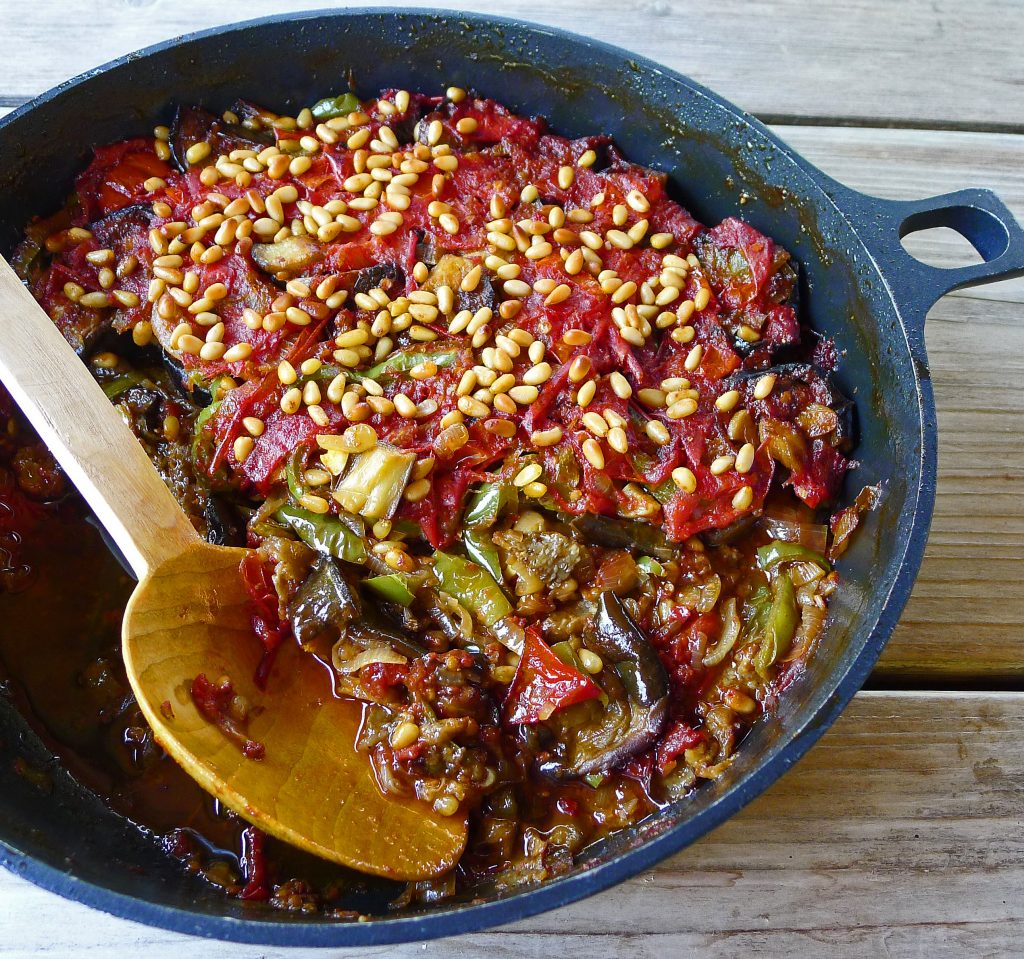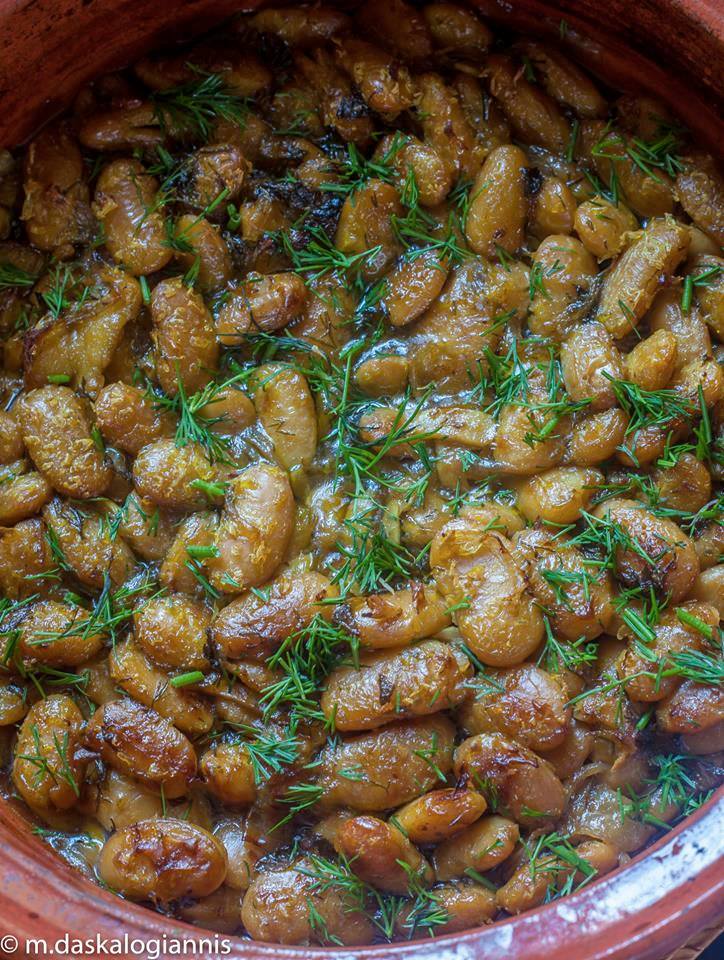We often roast the vegetables in the wood-fired oven and they become even more delicious and smoky. But even in the conventional oven, with the addition of some pimenton –the Spanish smoked pepper– if you like, this is a glorious and extremely easy dish to make.


When we were kids, before we had an electric stove with an oven, my mother used to get to our neighborhood’s bakery a pan of mixed vegetables well-doused in olive oil and sprinkled with oregano and other herbs. It was roasted in the communal oven, after the breads were baked, and we collected it just before lunch. Especially practical on summer days when we went swimming, as the baker was left to cook our lunch!
Serve it either warm or at room temperature, preferably with the addition of feta cheese, and fresh, crusty bread! These days we may just roast eggplants and peppers, omitting the potatoes if we want to serve the vegetables with rice or bulgur (see the Variation).










